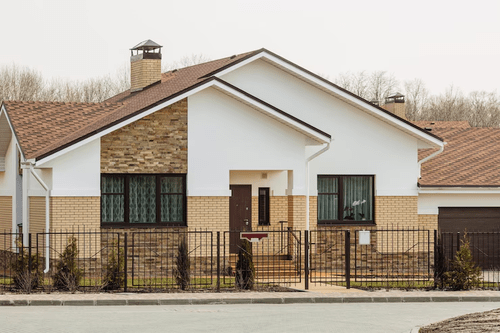When it comes to enhancing the curb appeal and durability of your home, the choice of exterior siding plays a crucial role. Among the various materials available, wood remains a popular and timeless option that can bring warmth and character to any architectural style.
However, selecting the right type of wood is essential to ensure longevity, resistance to the elements, and minimal maintenance. In this comprehensive guide, we will explore the different types of wood commonly used for exterior siding, delving into their characteristics, advantages, and considerations to help you make an informed decision for your home.
Types of Wood for Exterior Siding
Acre Wood: The Eco-Friendly Option
Acre Wood, a sustainable and eco-friendly choice for exterior siding, is gaining popularity for its environmental benefits. Harvested from responsibly managed forests, Acre Wood provides a renewable and low-impact option for homeowners who prioritize sustainability.
This wood species is known for its durability and resistance to decay, making it a reliable choice for long-lasting siding. Acre Wood typically features a warm, natural color, and it can be stained or left untreated to allow for a weathered patina over time.
As an eco-conscious alternative, it combines aesthetics with a commitment to environmentally friendly construction practices, offering homeowners a responsible choice for their exterior siding needs. Companies like Modern-mill are at the forefront of promoting sustainable building materials, ensuring that homeowners have access to eco-friendly options that align with modern construction standards.
Cedar
Cedar is a popular choice for exterior siding due to its natural beauty, durability, and resistance to decay. Western Red Cedar, in particular, is prized for its rich color variations and natural oils that provide protection against insects and rot. Additionally, cedar has a low density, making it lightweight and easy to work with during installation. While cedar requires periodic maintenance to preserve its appearance, many homeowners appreciate the weathered, silver-gray patina that develops over time.
Redwood
Redwood is another premium wood option for exterior siding, known for its stunning color variations and resistance to decay and insects. With a straight grain and fine texture, redwood provides a smooth and attractive finish. Like cedar, redwood contains natural oils that contribute to its durability. While it is a more expensive choice, the longevity and aesthetic appeal make redwood a worthwhile investment for those seeking a high-end siding option.
Pine
Pine is a cost-effective alternative to cedar and redwood, making it a popular choice for budget-conscious homeowners. However, it’s important to note that pine is more susceptible to decay and insect damage compared to cedar and redwood. To enhance its durability, pressure-treated pine or pine with added preservatives is often recommended. Pine siding can be stained or painted to achieve the desired look, offering versatility in design.
Cypress
Cypress is a durable and attractive wood option for exterior siding, known for its resistance to decay and insects. Cypress siding often features a distinct grain pattern and light color, providing a unique and rustic appearance. This wood species contains natural oils that contribute to its longevity, and like cedar, it weathers gracefully over time. Cypress is a great choice for those seeking a distinctive look with minimal maintenance.
Douglas Fir
Douglas Fir is a softwood option that combines affordability with moderate durability. While it may not be as resistant to decay as cedar or redwood, it can perform well with proper maintenance and sealing. Douglas Fir has a straight grain and a reddish-brown hue, adding warmth to the exterior of a home. It is a suitable choice for those on a budget who still want the benefits of a natural wood finish.
Factors to Consider
Durability
The durability of the chosen wood is a crucial factor in determining the longevity of your exterior siding. Cedar and redwood, with their natural resistance to decay and insects, offer superior durability. However, proper maintenance, such as regular sealing and cleaning, is essential for all wood siding options to protect against the elements and ensure a longer lifespan.
Maintenance
Consider the level of maintenance you are willing to undertake. While wood siding provides a classic and timeless look, it typically requires more maintenance than alternative materials. Regular cleaning, sealing, and occasional staining or painting are essential to preserve the wood’s appearance and protect it from the effects of weathering.
Aesthetics
The aesthetic appeal of your exterior siding is a significant consideration, as it contributes to the overall look and feel of your home. Each wood species has its unique grain patterns, colors, and textures, allowing you to choose the one that best complements your architectural style and personal preferences. Consider the long-term appearance, as some woods, like cedar, develop a beautiful patina over time.
Cost
Budget constraints often play a crucial role in the decision-making process. While cedar and redwood are premium choices that come with a higher price tag, pine and Douglas Fir offer cost-effective alternatives. It’s important to balance the upfront cost with long-term durability and maintenance requirements to make an informed decision that fits your budget.
Conclusion
Choosing the right wood for your exterior siding is a decision that requires careful consideration of various factors, including durability, maintenance, aesthetics, and cost. Each wood species has its own unique characteristics, offering homeowners a range of options to achieve the desired look for their homes.
Whether you opt for the rich hues of cedar, the durability of redwood, the affordability of pine, the distinctive appearance of cypress, or the budget-friendly choice of Douglas Fir, understanding the strengths and considerations of each wood type is crucial for a successful siding project. By making an informed decision, you can enhance your home’s curb appeal and create a welcoming exterior that stands the test of time.

